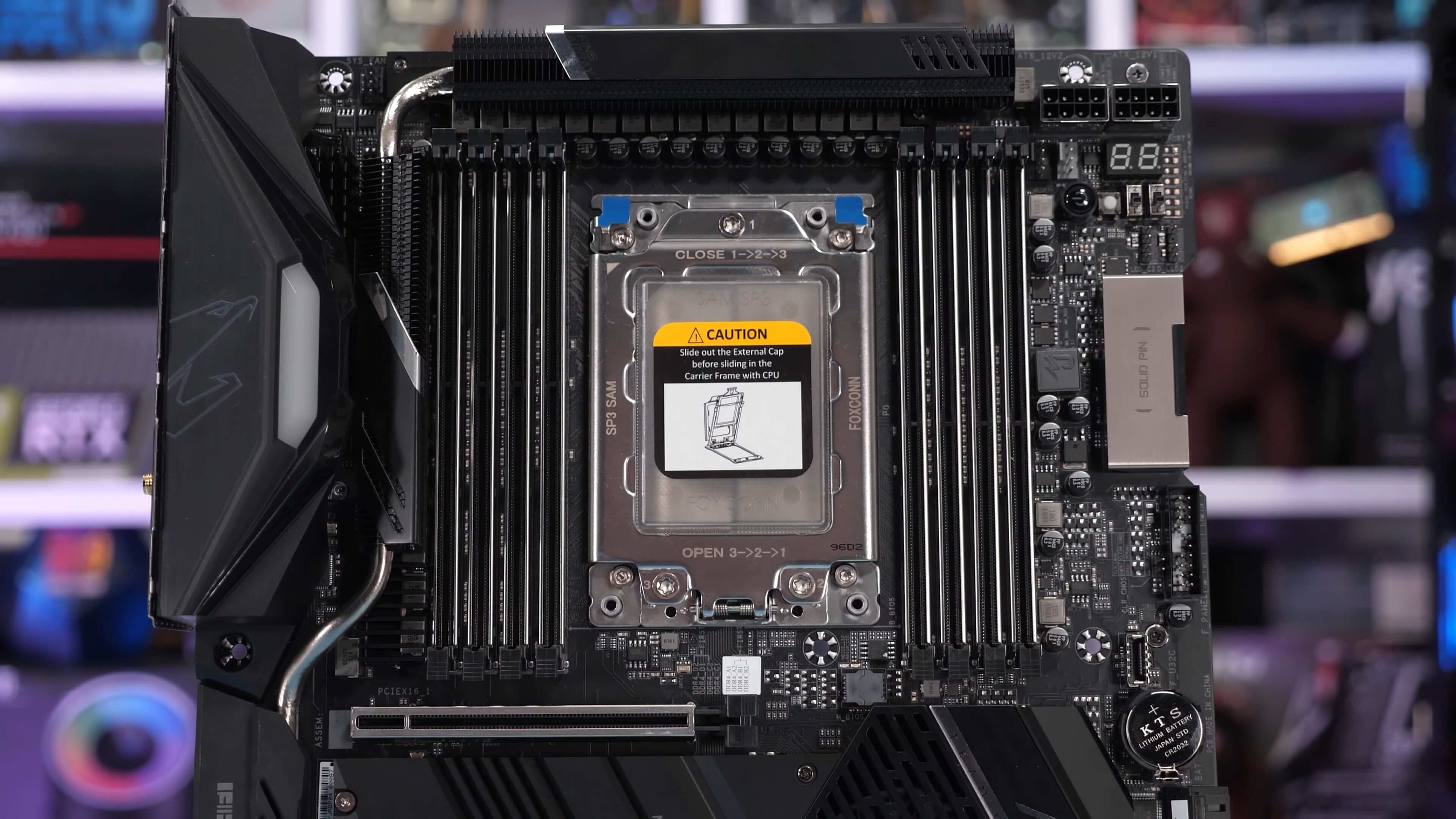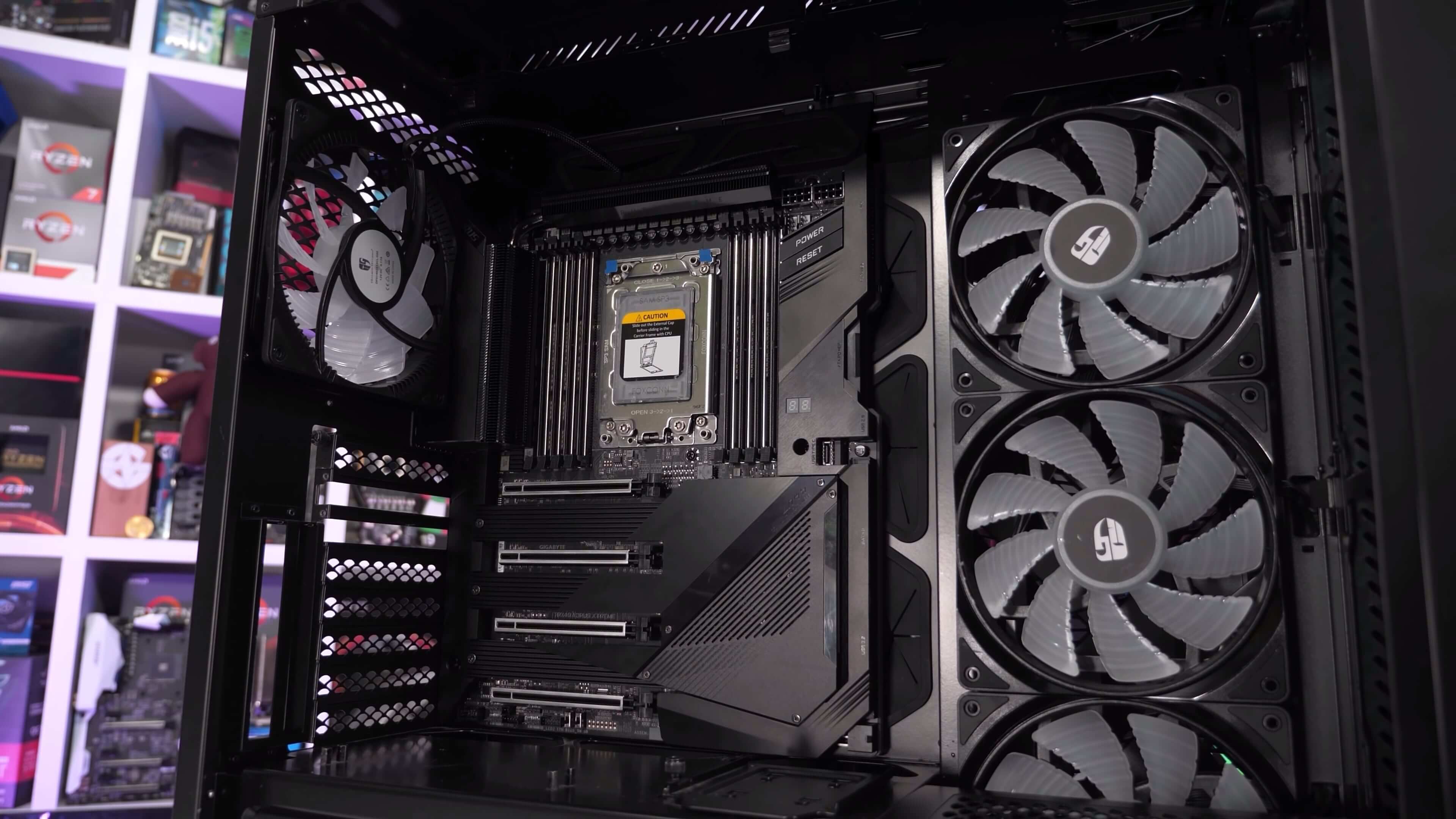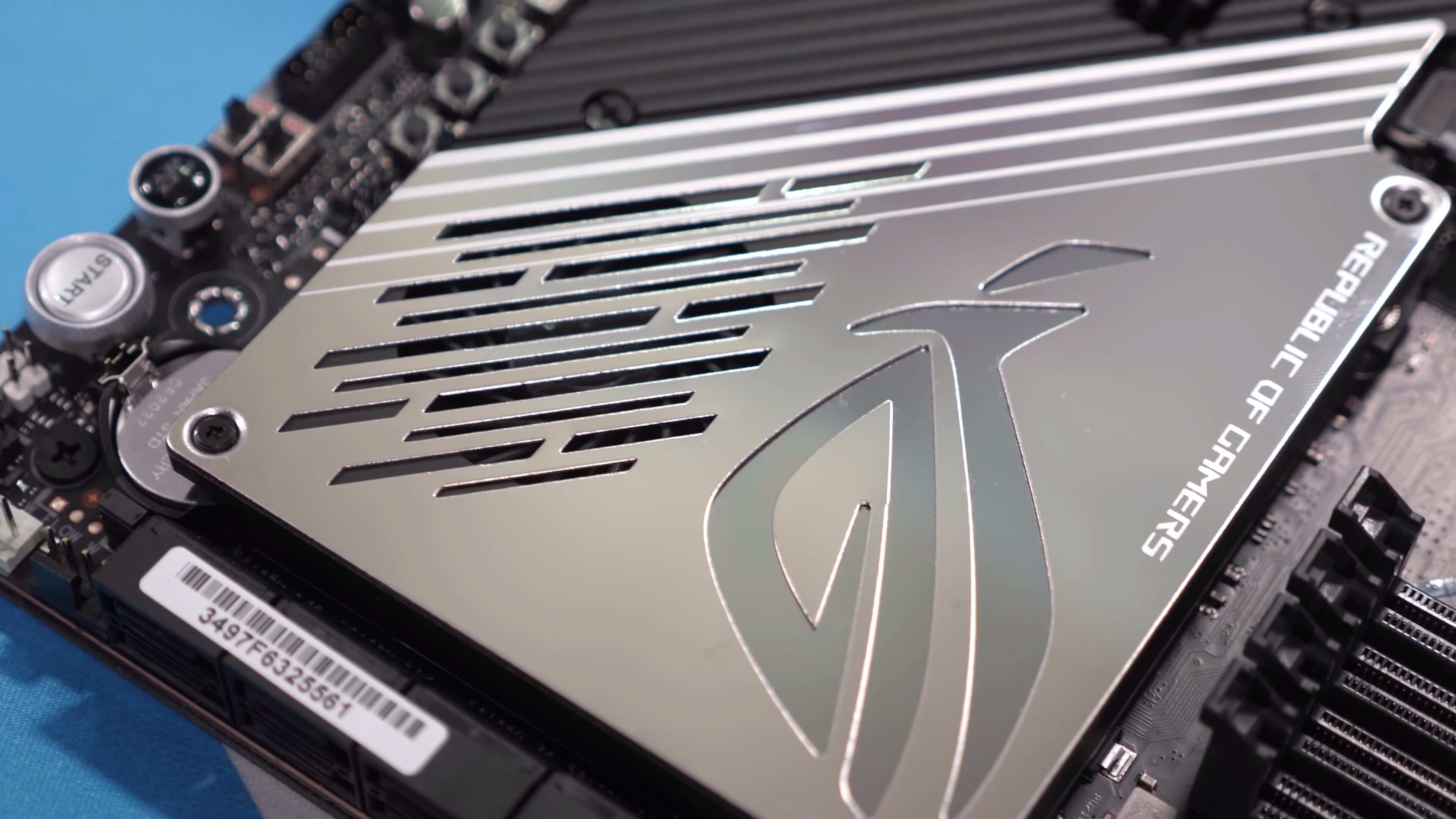Today we're going to perform some AMD TRX40 motherboard VRM thermal testing using the powerful 64-core Threadripper 3990X. This is a follow up to a test I performed last year using the 32-core 3970X. Back then we compared eight extreme motherboards designed to support 3rd-gen Threadripper. We wanted to see how these boards handled the CPU when overclocked to 4.2 GHz using 1.3v. At the end, we were satisfied to see all boards running cool and making an effortless pass of the torture test.
Installed inside a large ATX case with reasonably low air-flow and a 21C ambient temperature, the worst motherboard of the pack saw its VRM peak to just 60C, while the best, MSI's Creator, peaked at just 49C. Coming in second was Asus' ROG Zenith II Extreme, running 2C hotter than the MSI, followed by Gigabyte's Aorus Xtreme, running another 3 degrees hotter.
Despite coming second by what we consider a negligible margin – we'll emphasize that we were not looking for an outright winner – whether the board peaks at 49C of 51C doesn't matter, both are very satisfactory results. That didn't sit well with Asus nonetheless, so they went back and made a few quick upgrades. The previously used Infineon TDA21472 70A power stages were swapped for Infineon's TDA21490 90A. That seems like a solid plan to create the ultimate Threadripper power delivery system.
Everything else remains the same, including the PWM controller and, of course, the VRM configuration itself. Asus believes this will translate into offering the coolest running TRX40 motherboard in the market, and so we've armed ourselves for a complete top down retest with the 64-core 3990X. Let's now discuss the test configuration and then jump into the results.
Test Config and Benchmarks
To apply load to the system we're using a real-world Blender workload which runs for an hour, after which point we record the peak VRM temperature. The CPU of choice is naturally the Threadripper 3990X and for testing we have two configurations: a completely stock configuration with nothing but XMP loaded, and a second OC configuration which sees the 3990X overclocked to 3.8 GHz using 1.3v. We could have run at 4 GHz but we didn't think much would change, so to ensure stability across all boards we opted for 3.8 GHz.
For those wondering, the typical power draw from the wall was around 450 watts when stock, while the overclock configuration was sucking down around 850 watts (!).
All testing takes place in a 21C room inside a DeepCool New Ark 90SE chassis. The reason we used this case was simple, it was the only one we had on hand that could house the Aorus Xtreme and it only just squeezes in there. The fan configuration in this case is a little unusual as the front fans aren't front mounted, but rather side mounted. So in the front/side we have three 140mm fans and in the rear a single 140mm exhaust fan. This is a fairly typical fan setup for a full tower case, though we're still going to call it low air-flow for the VRM as we don't have a fan directly pumping air over the VRM heatsinks.
To record the temperatures we used a digital thermometer with K-Type thermocouples and for this test we're measuring the PCB temperature behind the power stages and reporting the highest temperature from the 8 probes.

Here's how the Alpha and a few other high-end TRX40 motherboards handle the stock 3990X. Pretty easily done, really. The ROG Zenith II Extreme Alpha is very impressive, peaking at just 50C and that meant it was 5C cooler than the previous champ, the MSI Creator.
In this test it was also 5C cooler than the original Zenith II Extreme. An impressive result, but if you're simply not after the very best VRM performance, then there are plenty of other capable boards worth considering.

Please note for the Asus boards we changed the 'voltage monitor' setting in the BIOS from die sense to socket sense. Asus now uses the "Die Sense" method instead of "Socket Sense" for increased accuracy, as readouts using Socket Sense are generally higher. However, socket sense is what everyone else uses, so for an apples to apples comparison when manually setting voltage, socket sense was used.
With the TR 3990X system sucking roughly 850 watts from the wall, things started to get hot, and in one instance throttle...
Let's start with the Zenith II Extreme Alpha: what a beast. Despite the massive load, the board peaked at just 82C, an 8 degree reduction from the original Zenith II Extreme. Interestingly, with this huge load Asus would have won anyway, albeit by just 2 degrees. The passively cooled MSI Creator is still very impressive though and with minimal air-flow still keep temps under 100C.
The Aorus Xtreme also did well, though we were surprised to find it running 6C hotter than the original Zenith board, but again, both did well and they certainly passed this test, so we wouldn't say the Zenith is a must-have based on these results. Even the Aorus Master passed despite betting a little toasty at 103C, you'd want to improve air-flow with this board and we wouldn't recommend it for hotter environments... if you're a mad man and plan on overclocking the snot out of the 3990X, that is.
If you are a mad man, you'll want to avoid the Asrock Taichi. It does a fine job with the 3990X at stock, but overclocked the power draw was just too much and it threw in the towel, periodically throttling the CPU down to 500 MHz for a breather, before cranking it back up for a few seconds. This process was repeated over and over again, keeping the hot spot at 97C.

Out of interest, we dropped the load line calibration of the Taichi down to Level 3 and this dropped the vcore to just 1.10v and the draw from the wall to 700 watts and here the Taichi managed to avoid throttling. It still peaked at 92C, but the system was stable, though pushing the voltage up a little bit to 1.15v introduced throttling again, so the Taichi is right on the edge here, basically maxing out.
This goes to show that with a little voltage tweaking the overclock can be optimized, though you won't get to 4 GHz with this setting.
What We Learned
The new Asus ROG Zenith II Extreme Alpha is a seriously high-end TRX40 motherboard and certainly the most impressive board in terms of VRM thermal performance, which should mean it's one, if not the best option for extreme Threadripper 3990X overclocking.
How many of you are interested in Threadripper overclocking, especially for the 64-core part is hard to say, but at a guess we'd say we could count the number of readers on one hand.
Initially Asus had planned to replace the original Zenith II Extreme with the upgraded Alpha model but due to the uncertainty caused by the spread of COVID-19, the transition will take longer than expected and the Alpha is expected to be in short supply. For now both models will co-exist, so if you want the Alpha make sure that's the version you're buying. In terms of price, there's not much difference, or up to $50 at most. Right now both boards are listed on Amazon at $850, though the Alpha is out of stock whereas the original model is available for the same price.
Obviously $850 is a heck of a lot of money for a motherboard, but TRX40 boards are generally quite expensive. If you're already spending $4,000 on a CPU, then $850 for the motherboard shouldn't be a problem, especially if you're after the best of the best. Boards such as the Asrock Taichi are much cheaper at around $500, but as you saw when it comes to extreme 3990X performance, they aren't nearly as capable as the Alpha.
We still feel like MSI's TRX40 Creator is a gem at $700, having passed our tests with relative ease. The Asus remains the superior platform for extreme overclocking, but again, we doubt many of you are overly interested in extreme workstation overclocking. The two don't really go hand in hand given reliability is paramount to workstation applications.
Looking at all the features on offer, if you're looking for a great TRX40 motherboard we'd pick between the Asus Zenith II Extreme Alpha, MSI Creator and Gigabyte Aorus Xtreme.




